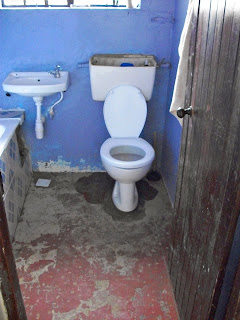Life in the Slums: Part II "The History"
Slums are characterized by the serious lack of basic services, by substandard housing or illegal and inadequate structures, overcrowding, unhealthy living conditions and hazardous locations, insecurity of tenure leading to irregular or informal settlements, poverty and social exclusion. Almost 60% of the 4 million residents in Nairobi live in a slum.
Kenya is a former British colony and gained it's independence in 1963. After independence, Nairobi grew rapidly and the growth put pressure on the city's infrastructure. Power cuts and water shortages were a common occurrence. Most residents came from rural areas due to underdevelopment, where people lived off of their ancestral land and were not necessarily earning an income. They migrated from all over East Africa looking for opportunity, work and stability. The numbers of people migrating to the city and the natural growth became too much for the infrastructure; therefore, officials had no choice but to allow informal settlements to crop up on unused land around the city. Kibera, the larges slum, was once a forest.
Between 1971 and 1995, the number of slums within Nairobi rose from 50 to 134, while the estimated total population of these settlements increased from 167,000 to less than 2 million individuals living on 5% of the land. Today Nairobi has a 4.1% growth rate and is expected to grow by another million in 5 years.
Kenya is a former British colony and gained it's independence in 1963. After independence, Nairobi grew rapidly and the growth put pressure on the city's infrastructure. Power cuts and water shortages were a common occurrence. Most residents came from rural areas due to underdevelopment, where people lived off of their ancestral land and were not necessarily earning an income. They migrated from all over East Africa looking for opportunity, work and stability. The numbers of people migrating to the city and the natural growth became too much for the infrastructure; therefore, officials had no choice but to allow informal settlements to crop up on unused land around the city. Kibera, the larges slum, was once a forest.
Between 1971 and 1995, the number of slums within Nairobi rose from 50 to 134, while the estimated total population of these settlements increased from 167,000 to less than 2 million individuals living on 5% of the land. Today Nairobi has a 4.1% growth rate and is expected to grow by another million in 5 years.


Comments
Post a Comment